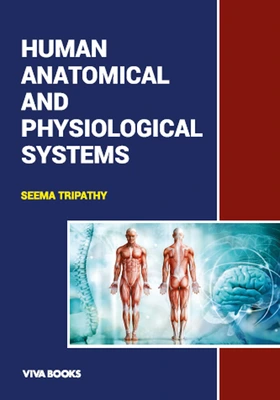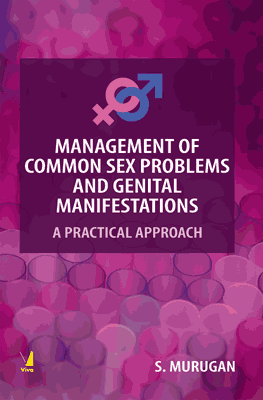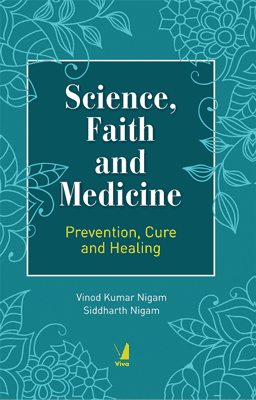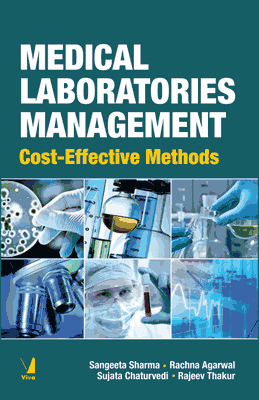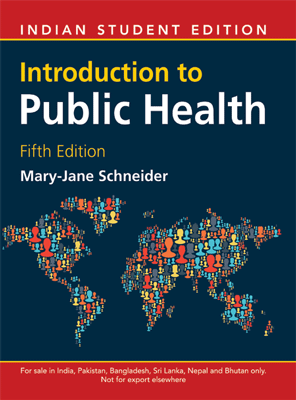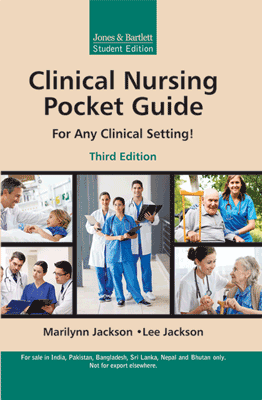Best Human Anatomical and Physiological Systems Book on Sale
Human Anatomical and Physiological Systems
₹1,075.50 ₹1,195.00 Save: ₹119.50 (10%)
Go to cartISBN: 9789395654302
Bind: Paperback
Year: 2023
Pages: 274
Size: 7 x 9.5 Inch
Publisher: Viva Books Originals
Sales Territory: Worldwide
Description:
Human anatomical and physiological systems represent a systematic association of different types of organs arranged together in such a manner to perform complex functions for the body. Human physiology provides an exciting opportunity to understand the mechanism of each event that occurs within the body. Human organ systems maintain the homeostasis of the body by working together in a coordinated manner to support cellular processes. Several important questions on physiological concepts and anatomical perspectives remain unsolved. This textbook precisely explains the fundamental concepts of human anatomy and physiology along with different mechanisms and events occurring during a particular process. For simplicity and better understanding, this textbook is divided into 12 individual chapters. The main characteristics of this book are as follows:
- At the beginning of each chapter, a summary is given, describing the entire chapter.
- Towards the end of each chapter, a box containing additional relevant information regarding the chapter is given.
- At the end of each chapter, 15-20 questions are given for readers to test their understanding.
This book intends to address the difficulties faced by readers while studying the chapters with simple flowcharts and diagrams based on the author’s experience during her postgraduation. Considering the interrelatedness between health and physiology, the impairment of processes, parts of processes, or any error occurring during commencement of physiological pathways results in disorders or diseases. Detailed information regarding such disorders or diseases for individual physiological systems is briefly discussed herein. This textbook offers a significant solution to the problems often encountered by students while studying and understanding human anatomy and physiology.
Target Audience:
Helpful for undergraduate and postgraduate students studying human anatomy and physiology in life sciences, medicine, nursing, dentistry, medical technology, physical therapy and athletic training. Anatomy and physiology has an important role in biomedical engineering, medicine and therapeutics. This book is also recommended for preparation of CSIR-NET, GATE, ICMR-JRF, JNU-Biotech and other national level examination like NEET.
Contents:
Acknowledgements • Foreword • Preface • Abbreviations
Chapter 1: Level of Organization and General Body Plan • Introduction • Level of Structural Organization • Chemicals • Cells • Tissues • Epithelial Tissues • Connective Tissues • Muscle Tissues • Neuronal Tissues • Organs • Organ Systems • Level of Biochemical Reactions • Metabolism • Catabolism • Anabolism • Level of Maintenance of Steady State • Homeostasis • Feedback Cycle • Negative feedback mechanism • Example of negative feedback loop • Positive feedback loop • Examples of positive feedback loop • Description of Some Anatomical Terms of Body • Body Cavities • Ventral Cavities • Dorsal Cavities • Anatomical Terms for Different Positions of Body • Planes of the Body • Mid-sagittal or Median Plane • Sagittal or Lateral Plane • Frontal or Coronal Plane • Transverse or Axial Plane • Complexity of Human Beings • References • Questions and Answers
Chapter 2: Respiratory System • Introduction • Anatomy of Different Organs Present in the Upper Respiratory Tract • Nose • Nostrils • Nasal Cavity • Nasal Conchae • Olfactory Receptors • Respiratory Mucosa • Mucus • Paranasal Sinuses • Ciliated Cells • Palate • Pharynx • Anatomy of Different Organs Present in the Lower Respiratory Tract • Larynx • Trachea or Windpipe • Bronchi and Bronchioles • Lungs or Pulmons • Diaphragm • Process of Respiration • Breathing or Pulmonary Ventilation • Respiratory Volumes and Capacities • Exchange of Gases • Transport of Gases • Oxygen Dissociation Curve • Bohr’s Effect • Haldane Effect • Transport of CO2 • Factors that Affect the Rate of Diffusion • Solubility of Gases • Partial Pressure • Thickness of Membrane • Regulation of Respiration • Disorders of Respiratory System • References • Questions and Answers
Chapter 3: Digestive System • Introduction • Components of Human Digestive System • Details of Anatomy of Organs Associated with Human Digestive System • Oral Cavity or Mouth • Structure and Function of Teeth • Structure and Function of Tongue • Functions of tongue • Taste • Speech • Food manipulation • Palate • Pharynx • Nasopharynx • Oropharynx • Laryngopharynx • Oesophagus • Stomach • Intestine • Small Intestine • Parts of Small Intestine • Duodenum • Jejunum • Ileum • Layers of the Small Intestine • Serosa • Muscularis • Submucosa • Mucosa • Large Intestine • Cecum • Colon • Appendix • Rectum • Anal Canal • Accessory Glands • Salivary Glands • Parotid Glands • Submandibular Glands • Sublingual Glands • Pancreas • Functions of Pancreas • Liver • Gall Bladder • Mechanism of Digestion and Absorption • Digestion and Absorption of Carbohydrates • Digestion and Absorption of Proteins • Digestion and Absorption of Lipids • Digestion of Nucleic Acids (NAs) • Digestion and Absorption of Vitamins • Disorders of Digestive System • References • Questions and answers
Chapter 4: Circulatory System • Introduction • Blood • Composition of Blood • Characteristics of Components Present in Blood • Plasma: The Liquid Part • Blood Cells: The Cellular Parts • RBCs • Platelets • Monocytes • Lymphocytes • Basophils • Eosinophils • Neutrophils • Blood Group • ABO Blood Grouping • Rh Grouping • Blood Clotting Mechanism • Human Circulatory System • Heart: The Muscular Organ • Structure • Functions • Direction of blood flow • Sinoatrial (SA) node • Conduction pathway • Cardiac cycle • Cardiac output (heart output) • Contractility • Pre load • Post load • Measurement of Heart’s Rhythm and Electrical Activity: Electrocardiogram (ECG) • Double Circulation • Pulmonary and Systemic Circulation • Portal System • Hepatic Portal System and Its Functions • Lymphatic System • Regulation of Cardiovascular System • Cardiovascular Disorders • References • Questions and Answers
Chapter 5: Excretory System • Introduction • Urinary System in Human • Kidneys • Formation of Urine • Glomerular Filtration • Selective Reabsorption • Tubular Secretion • Concentration of the Urine • Mechanisms Controlling Kidney Functions • Involvement of Hormones • Renin-Angiotensin-Aldosterone System (RAAS) • Heart • Micturition • Other Organs Involved in Excretion • Diseases and Disorders Associated with Kidneys • References • Questions and Answers
Chapter 6: Nervous System and Sense Organs • Introduction • Parts of Nervous System • Central Nervous System (CNS) • Brain • Dura mater • Arachnoid mater • Pia mater • Neurons • Dendrites • Cell body • Axon • Types of Neurons • Sensory neurons • Motor neurons • Interneurons • Functions of Neurons • Generation and conduction of impulses • Transmission of nerve impulses • Different Parts of Brain • Forebrain • Telencephalon • Diencephalon • Thalamus • Hypothalamus • Pineal gland • Midbrain (Mesencephalon) • Tectum • Cerebral peduncle • Substantia nigra • Hindbrain • Pons •Cerebellum • Medulla oblongata • Cerebrospinal fluid (CSF) • Brainstem • Spinal Cord • Structure of Spinal Cord • Cervical nerves • Thoracic nerves • Lumbar nerves • Sacral nerves • Coccygeal nerves • Functions of Spinal Cord • Peripheral Nervous System (PNS) • Autonomic Nervous System (ANS) • Sympathetic Nervous System (SNS) • Parasympathetic Nervous System (PNS) • Somatic Nervous System • Reflex Action • Types of Reflex Arcs • Nervous System Disorders • Sense Organs • Eyes (Sight or Ophthalmoception) • Structure of Eyes • Mechanism of Vision • Diseases of Eyes • Ears (Hearing or Audioception) • Structure of Ear • Tragus • Antitragus • Helix • Antihelix • Lobule • Choncha • Crus Helix • External Auditory Canal • Functions of Each Part of Ear • Outer Ear • Pinna • External auditory canal • Middle Ear • Tympanic membrane • Ear ossicles • Eustachian tube • Inner Ear • Mechanism of Hearing • Common Problems of Ears • Taste or Gustaoception • Mechanism of Taste Perception • Common Problems with Tongue • Nose (Smell or Olfalcoception) • Architecture of Nose • Olfactory Receptor Cells • Supporting Cells • Basal Cells • Olfactory Glands • Mechanism of Smell Perception • Common Problems Associated with Nose and Nasal Passage • Skin (Touch or Tactioception) • Receptors on Skin • Merkel’s Disc • Meissner’s Corpuscles • Pacinian Corpuscles • Free Nerve-ending Receptors • Encapsulated Receptors • Mechanism of Touch Perception • Diseases Associated with Skin • References • Questions and Answers
Chapter 7: Endocrine System • Introduction • Hormones: Secretion of Endocrine Glands • Action of Hormones • Ion Channel Receptors • Enzyme-linked Receptors or G Protein-coupled Receptors • Gene-coupled Receptors • Properties of Hormones • Hormones Secreted by Endocrine Glands • Hypothalamus • Pituitary Gland • Growth Hormone (GH) • Thyroid-stimulating Hormone (TSH) • Adrenocorticotropic Hormone (ACTH) • Luteinizing Hormone (LH) • Follicle-stimulating Hormone (FSH) • Prolactin • Oxytocin • Antidiuretic Hormone (Vasopressin) • Pineal Gland • Thyroid Gland • Parathyroid Gland • Thymus Gland • Adrenal Gland • Pancreas • Exocrine Function of Pancreas • Endocrine Function of Pancreas • Reproductive Hormones • Feedback Mechanism • Negative Feedback Mechanism • Positive Feedback Mechanism • Disorders of the Endocrine System • References • Questions and Answers
Chapter 8: Immune System • Introduction • Barrier Immunity • Innate Immunity • Immune Cells Mediate Innate Immunity • Complement System • Acquired Immunity or Adaptive Immunity or Specific Immunity • Immune Response • Primary Immune Response • Secondary Immune Response • Cells Involved in Adaptive Immune Response • Functions of B cells • Functions of T cells • Major Histocompatibility Complexes (MHCs) • Autoimmunity • Mechanisms Activate Autoimmunity • Immunological Deficiency Theory • Forbidden Clone • Altered Antigens • Sequestered Antigens • Genetic Influence • Autoimmune Disorders • Hypersensitivity • Type I Hypersensitivity • Type II Hypersensitivity • Type III Hypersensitivity • Type IV Hypersensitivity • Vaccines • Lymphatic System • Primary Lymphoid Organs • Bone Marrow • Red bone marrow • Yellow bone marrow • Thymus • Secondary Lymphoid Organs • Lymph Nodes • Spleen • Tonsils • Peyer’s Patches • Mucous Membranes • Functions of Lymphatic System • Disorders of Immune System • References • Questions and Answers
Chapter 9: Integumentary System • Introduction • Anatomy and Physiological Functions of Different Organs of the Integumentary System • Skin • Epidermis • Stratum basale (basal layer) • Stratum spinosum (spiny layer) • Stratum granulosum (granular layer) • Stratum lucidum • Stratum corneum (hornlike layer) • Dermis • Major Regions of Dermis • Hypodermis • Functions of Skin • Glands Present in the Dermis • Sweat or Sudoriferous or Sudoriparous Gland • Eccrine Glands • Apocrine Glands • Mammary Gland • Ceruminous Glands • Sebaceous Glands • Meibomian Glands • Lacrimal Gland • Perineal Glands • Blood Vessels • Hair • Root • Shaft • Nails • Nail Plate • Nail Matrix • Nail Bed • Functions of Nails • Disorders of Integumentary System • References • Questions and Answers
Chapter 10: Muscular System • Introduction • Properties of Muscular Tissues • Classification of Muscles • Skeletal Muscles • Cardiac Muscles • Visceral Muscles • Structure of Skeletal Muscles • Structure of Sarcomeres • Structure of Cardiac Muscles • Structure of Visceral Muscles • Structural Components of Myofilaments • Actin • Myosin • Muscle Contraction • Mechanism of Muscle Contraction • Pathway of Skeletal Muscle Contraction • Pathway of Cardiac Muscle Contraction • Pathway of Smooth Muscle Contraction • Cori Cycle • Rigor Mortis • Disorders of the Muscular System • References • Questions and Answers
Chapter 11: Skeletal System • Introduction • Bones • Long Bones • Short Bones • Flat Bones • Sesamoid Bones • Irregular Bones • Cartilage • Hyaline Cartilage • Fibrocartilage • Elastic Cartilage • Ligaments • Anterior Longitudinal Ligament (ALL) • Posterior Longitudinal Ligament (PLL) • Ligamentum Flavum • Interspinous Ligaments • Supraspinous Ligament • Tendon • Skull • Cranial Bones • Facial Bones • Hyoid Bone • Ear Ossicles • Vertebral Column • Cervical Vertebrae • Thoracic Vertebrae • Lumbar Vertebrae • Sacral Vertebrae • Coccygeal Vertebrae • Intervertebral Discs • Functions of Vertebral Column • Protection • Flexibility and Mobility • Structural Support • Base for Attachment • Sternum • Ribs and Ribcage • Appendicular Skeleton • Limbs • Forelimbs • Humerus • Radius and ulna • Carpals • Metacarpals • Phalanges • Limb girdles • Pectoral girdle • Pelvic girdle • Hindlimbs • Femur • Patella • Tibia and fibula • Tarsals • Metatarsals • Tarsometatarsal joints • Intermetatarsal joints • Metatarsophalangeal joints • Phalanges • Joints • Diseases and Disorders of Skeletal System • References • Questions and Answers
Chapter 12: Reproductive System • Introduction • Female Reproductive System • External Sex Organs • Mons Pubis • Labia Majora • Labia Minora • Clitoris • Vestibule • Internal Sex Organs • Vagina • Cervix • Fallopian Tubes • Uterus • Ovary • Breast • Male Reproductive System • External Sex Organs • Urethra • Penis • Scrotum • Internal Sex Organs • Testes • Seminiferous Tubules • Epididymis • Vas Deferens • Seminal Vesicles • Prostate Gland • Bulbourethral Glands • Gametogenesis • Spermatogenesis • Phases of Spermatogenesis • Spermatocytogenesis • Phase of multiplication • Phase of growth • Phase of maturation • Spermiogenesis • Structural Details of Mature Sperm • Oogenesis • Menstruation Cycle • Hormones Involved in Human Reproduction • Fertilization • Embryonic Development • Pregnancy • Parturition • Lactation • Disorders of Male and Female Reproductive Systems • References • Questions and Answers
Suggested Readings
Index
About the Author:
Dr Seema Tripathy worked as a research scientist in the field of biotechnology. Her research career involved working as a post-doctoral fellow (PDF) in the School of Biological Sciences at the National Institute of Science Education and Research (NISER), Bhubaneswar and Women Scientist-A (Department of Science and Technology, Government of India) at Centre for Biotechnology, Siksha ‘0’ Anusandhan (Deemed to be University), Bhubaneswar. She obtained her postgraduate degree from the University of Hyderabad and pursued her Ph.D. in biotechnology from Utkal University, Bhubaneswar. Her doctoral research was focused on the derivation, differentiation and cryopreservation of fish embryonic stem cells. She utilized her expertise in stem cell isolation and developed a pipeline to isolate stem cells from unconventional sources like breastmilk and urine, which can be obtained via non-invasive procedures. She developed a cost-effective and simple protocol for the culture of breastmilk-derived mesenchymal stem cells (BmDMSCs) which have a huge potential in biomedical applications involving the regeneration of injured tissues and repair of impaired organs. She is very passionate to develop stem cell technologies for use in biomedical practices towards human welfare. She authored a large number of publications in reputed peer-reviewed journals and also filed a couple of patents. She felt the lack of a good quality and simple book on human anatomical and physiological systems during her tenure as a lecturer at Ravenshaw University. This need has eventually motivated her to write this book for undergraduate and postgraduate level students.
